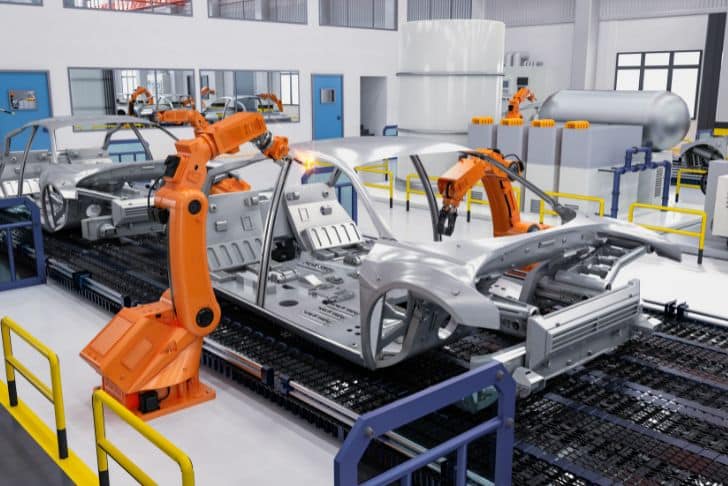Embarking on a journey right into the heart of the future of corporate processes, the article “Exploring the Role of AI and ML in Compliance Automation” showcases how advancements in Artificial Intelligence (AI) and Machine Learning (ML) technologies are spurring innovation in the realm of compliance automation. From evidence gathering and control monitoring to conducting risk evaluations and crisis management, AI and ML are steadily making inroads into each facet of compliance. With a strong emphasis on data privacy and continuous real-time monitoring, these tech innovations streamline their role in compliance operations, paving the way for a flexible, data-driven approach to policy settings and decision making.
The article also highlights the increasingly important extension of compliance beyond national borders amidst varied regulatory frameworks, mirroring the globalized corporate landscape. Plus, it’s evident from the upcoming trends that compliance automation won’t merely be a tool for audits but an integral part of everyday business operations, keeping organizations up-to-date with the ever-evolving regulatory changes.
Understanding Compliance Automation
The Concept of Compliance Automation
Compliance automation refers to the use of technology to eliminate manual compliance tasks that often involve high degrees of vulnerability to errors and inefficiencies. By involving automated processes, businesses can reduce costs, minimize risks, and align themselves more effectively with industry standards and regulatory guidelines.
Importance of Compliance Automation in Modern Businesses
In the context of modern businesses, compliance automation becomes incredibly significant. It allows organizations to increase the accuracy of their reports, reduce labor hours spent on compliance activities, and ensure a more consistent application of rules across the board. Moreover, it improves risk management as self-correcting mechanisms of automated processes can prevent potential oversights or human errors that might otherwise lead to breaches of compliance.
Key Trends in Compliance Automation
Five key trends are set to redefine the landscape of compliance automation in 2023. These trends include the integration of AI and ML in compliance activities, the emphasis on data privacy, the importance of real-time continuous monitoring, the engagement of compliance automation in daily business operations, and the geo-scalability of compliance beyond national borders.
The Role of AI and ML in Compliance Automation
Leveraging AI and ML for Compliance Tasks
Artificial Intelligence (AI) and Machine Learning (ML) are progressively being used to handle critical compliance tasks. From evidence gathering to control monitoring, AI and ML can smartly automate pre-defined tasks thereby streamlining operations and enhancing efficiency.
Achieving Risk Assessment Through AI and ML
AI and ML technologies have significantly enhanced the abilities of businesses to manage and evaluate risk. Their predictive capabilities allow organizations to identify potential compliance risks before they escalate, giving them time to implement protective measures accordingly.
AI and ML in Crisis Management
In situations of crisis, AI and ML tools come in handy to manage and control the impact on the business. With their ability to learn from historical data, they can recognize patterns that humans might overlook, enabling a swift and responsive action to mitigate crisis situations.
Use of Predictive Analytics in Compliance Automation
AI and ML also contribute to compliance automation through predictive analytics. Through data-driven predictions, businesses can proactively address potential compliance issues, thereby reducing reaction times and minimizing the effects of any breaches.

Data Privacy and Compliance Automation
Ensuring Responsible Data Collection
In an era where data is the new gold, ensuring its responsible collection is crucial. Compliance automation tools can manage how data is collected, ensuring that all collection activities adhere to set guidelines and regulations.
Managing Consent and Incident Responses
Alongside data collection, managing user consent and handling incident responses are also well within the scope of compliance automation. These tools can automatically keep track of user consents, ensuring that no data is collected without proper authorization.
Administration of Data Privacy Laws through Automation
Particularly in regions with stringent data privacy laws, the administration of such laws is significantly simplified through automation. The automation process can help ensure that all aspects of these laws are taken into account, mitigating the risk of compliance violation.
Real-Time Monitoring in Compliance Automation
Significance of Continuous Monitoring
Continuous monitoring plays a significant role in compliance automation. Instead of occasional audits, a continuous stream of data is analyzed providing valuable insights about potential risks or lapses in compliance, allowing businesses to adopt a proactive approach.
Achieving Proactive Compliance with Real-Time Data Controls
Real-time data controls, enabled by AI and ML, have revolutionized the way compliance is managed. These controls allow businesses to react to potential compliance risks immediately as they come up, fostering a more proactive compliance management approach.
Role of AI and ML in Automating Real-Time Compliance Monitoring
AI and ML are at the forefront of automating real-time compliance monitoring. By automating the monitoring process, these technologies ensure fool-proof compliance adherence and provide an efficient system for businesses to stay ahead of risks.

Integrating Compliance Automation into Daily Business Operations
Moving Compliance Automation Beyond Audits
The future of compliance automation is not limited to audits. Integrating compliance automation into daily business operations ensures an ongoing, non-disruptive process that actively reduces risks and improves efficiency.
Role of Automation in Policy Setting
Automation plays a major role in policy setting as well. By enabling the automatic extraction of insights from data, it drives evidence-based policy making, allowing businesses to make informed decisions that are in their best interest.
Data-Oriented Decision Making
And through all this, data-oriented decision making emerges as the norm. Compliance automation removes the speculation out of decision making, replacing it with concrete, actionable insights driven by AI and ML.
Compliance Automation and Geographic Scalability
Expanding Compliance Across Borders
As businesses increasingly operate across borders, so must compliance. Automated compliance solutions enable seamless regulatory adherence even when operating across different countries, with disparate regulations.
Managing Different Regulatory Requirements
Managing varying regulatory requirements across regions is a challenge. Compliance automation helps businesses navigate and adhere to different legal landscapes, averting potential legal disputes or violations.
Global Compliance Strategy with Automation
Ultimately, compliance automation leads to the formulation of a robust global compliance strategy. It combines regulatory intelligence with effective automation techniques, facilitating a comprehensive approach to compliance that is adaptable to regional nuances.

Staying Abreast of Regulatory Changes with Automation
Automating Updates to Latest Regulatory Changes
Regulations are ever-changing, and it takes considerable resources to keep up with them manually. Compliance automation solutions are evolving to accommodate automatic updates to regulatory changes, thereby helping businesses stay updated with minimal effort.
Using AI and ML to Track Regulatory Amendments
AI, with its predictive capabilities, and ML, with its pattern recognition, are being increasingly used to track and respond to regulatory amendments. This helps businesses anticipate and prepare for changes, minimizing the disruption these changes might cause.
Creating and Managing Regulatory Controls Inventory
Automation can also assist in creating and managing a complete inventory of regulatory controls. This increases visibility, encourages compliance, and actively helps businesses understand and meet the multitude of regulations they are subject to.
Challenges in Implementing Compliance Automation
Technological Challenges and Limitations
However, implementing compliance automation is not without its challenges. There are technological hurdles to overcome, including the integration of new technology with existing systems, managing the technological changes within an organization, and addressing the limitations that existing technologies might have.
Regulatory and Legal Obstacles
The rapidly changing regulatory landscape is another challenge, requiring businesses to constantly adjust their compliance automation strategies and processes to stay compliant with all relevant laws.
Training and Adoption of New Technologies
Training employees to use new technologies and ensuring effective adoption within the organization is another hurdle businesses face while implementing compliance automation. It demands considerable investment in terms of resources and time.
Future Scope of AI and ML in Compliance Automation
Projecting Future Trends
Looking towards the future, AI and ML hold immense potential in transforming how businesses handle compliance. These technologies will continue to evolve and become more sophisticated, driving more efficient and effective compliance processes.
Advancements in AI and ML for Compliance Automation
Significant advancements in AI and ML are anticipated that will likely introduce innovative frameworks and tools for compliance automation. These advancements will further reduce manual labor, decrease errors, provide more insights, and ultimately strengthen compliance across businesses.
Role of AI and ML in Future Compliance Frameworks
The role of AI and ML in future compliance frameworks is set to become even more prominent. As their capabilities grow, these technologies will play a crucial role in automating tasks, predicting risks, and aiding decision making in the realm of compliance.
Case Studies of AI and ML in Compliance Automation
Exploring Successful Implementations
Numerous case studies exist showing successful implementations of AI and ML technologies in compliance automation. These instances provide valuable insights into the benefits and challenges of integrating these technologies into businesses, illuminating the path forward for many.
Key Learnings from Case Studies
From these case studies, key learnings can be drawn. They guide us in understanding which practices work best, what potential pitfalls to avoid, and how to effectively deploy compliance automation techniques in different sectors.
Impact Assessment of AI and ML in Compliance Automation
Evaluating the impact of AI and ML in compliance automation is essential to understand its extensive benefits and any potential drawbacks. Impact assessments highlight the tangible improvements brought about by the introduction of these technologies, making the case for their continued use in compliance automation clearer and stronger.
